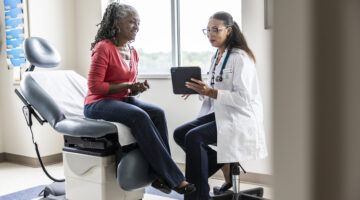

Understanding EGPA: The Role of Eosinophils and Advancements in Treatment Options
FASENRA® (benralizumab) injection, for subcutaneous use, 30 mg is indicated for the treatment of adult patients with eosinophilic granulomatosis with polyangiitis (EGPA). FASENRA provides a treatment option for HCPs to consider when managing this challenging disease.
Redox, a health IT company focused on interoperability, has partnered with Withings to make its remote patient monitoring solution compatible with nearly all EHRs used by healthcare stakeholders.
Withings’ remote patient monitoring solution, MED·PRO CARE, enables health professionals to monitor patients with chronic diseases — such as diabetes, hypertension or chronic heart failure — from afar, Alexandra Yembele, business-to-business marketing project manager at Withings, said in an email.
Redox offers a single, secure application programming interface endpoint that connects and integrates provider EHRs with healthcare products and services. Per the new partnership, MED·PRO CARE will become compatible with nearly all EHRs used by physicians and hospitals.
Clinicians will be able to order and ship Withings’ connected health devices directly to their patients through their EHRs, and data from the remote monitoring devices will be integrated into the clinicians’ medical record systems, Yembele said.

Tackling Rising Drug Costs and Growing Popularity of GLP-1’s
See how Quantum Health is providing the steps to help their members tackle the cost of specialty medications and other drugs.
“This partnership allows Withings to work with major and respected hospitals as it makes MED·PRO CARE now compatible with most EHRs,” she said. “For Redox, they have a new commercial partner to offer through their solution.”
The remote patient monitoring solution can be accessed through tablets and computers and allows clinicians to track several vitals using Withings’ range of health devices, which includes wireless blood pressure monitors, connected scales, activity trackers and sleep monitoring devices. The solution allows physicians to define a set of thresholds and alerts them when their patients have irregular readings.
Further, Withings’ connected health devices and remote monitoring tools, such as its connected thermometer that enables people to take temperature readings without skin contact, can be helpful in assessing symptoms of Covid-19, Yembele said.
“[Withings] is also currently participating in a few studies to further prove the benefits of using our devices to monitor Covid-19 patients remotely and prevent any complications or any unnecessary hospitalizations,” she added.
Hospital bed capacity has become a highly sought after resource amid the pandemic, as Covid-19 cases surge with no end in sight. Using data from University of Washington’s Institute for Health Metrics and Evaluation, the American Hospital Association occupancy projection tool predicts that 78% of the hospital beds in the U.S. will be occupied by Covid-19 patients by Feb. 1.
To keep beds free for those with severe Covid-19 illnesses, hospitals are increasingly turning to remote monitoring solutions and hospital-at-home programs to care for other patients.
“Throughout the pandemic, we’ve seen the importance of and rise in remote patient monitoring,” Yembele said.
Photo credit: Gerasimov174, Getty Images






